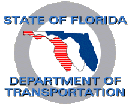|
|
Introduction |
|
|
Starting on March 17, 20 and 22, 2000 in Miami, staff from Jaffe Engineering and Development Industries with support from the Prime Contractor Kimley-Horn and Associates began to conduct and moderate a series of 8 Regional ITS Architecture Workshops. As stated in "Florida's Intelligent Transportation System Strategic Plan" Final Report (Aug 23, 1999) p 29:
Prior to each of the regional workshops, the contractors collected available documentation on regional ITS system architectures that may have already been developed as well as documentation and other information on existing ITS deployments. This information was used to begin (and in some cases substantially begin) the process of developing a regional ITS architecture with the stakeholders of the region. Invitations to Stakeholders to participate in each of the Workshops included a letter from the FDOT Secretary. Having collected and assimilated information about the region into our database, we then conducted an intensive three day workshop over a period of one-week in each District with regional stakeholders representing all aspects of ITS in the District. At the end of the workshops, we completed the district regional ITS architectures and it was reviewed and agreed to by the stakeholders. After completing this process for each of the eight workshops covering all Florida Districts, the results were "rolled up" to define the Florida Statewide ITS Architecture. In many cases, this regional ITS architecture that we have developed goes beyond regional ITS architecture work already performed in level of detail with regard to identifying actual communication information exchange requirements between specific elements in the region. The objective of the regional ITS architectures being developed through this program is to meet the TEA-21 requirements on Architecture Conformity as interpreted in the USDOT's Interim Guidance on Conformity with the National ITS Architecture and Standards:
As per the guidance, we first systematically identify the existing and future inventory of stakeholder elements at the subsystem level (as defined in the National ITS Architecture) based on existing regional and corridor deployments, existing ITS architectural documentation, and articulation of stakeholder needs in the workshops. Next, we identify generic services through National ITS Architecture Market Packages, and where stakeholders indicate a need, we customize those Market Packages for specific applications (existing or future) identified by the stakeholders. This customization identifies information exchange at the architecture flow level as specified in the Interim Guidance. Finally, we roll-up all information exchange requirements at the architecture flow level for each subsystem level entity in the region, and review this with the stakeholders. The result is a consensus architecture for the region, documented here. |

